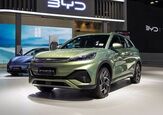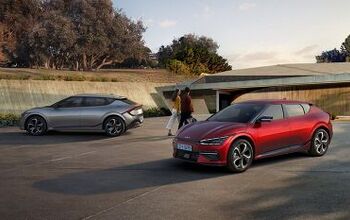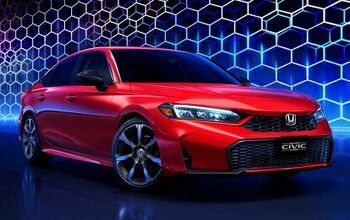Musk Claims Tesla's New Autopilot Chip Is Only Six Months Away

Tesla CEO Elon Musk says a new chip aimed at improving its vehicles’ Autopilot features will be available in about six months.
However, if you’re hoping the automaker is preparing to light some candles and knock its vehicles up with legitimate self-driving technology, you’ll need to keep on wishing. During a string of tweets on Tuesday, Musk explained that the new chip would be a $5,000 extra for customers who did not purchase their cars with the “Full Self-Driving” package — an automotive claim that’s about as valid as Donald Trump’s hair or Elizabeth Warren’s status as a Native American.
It’s difficult to understand why anyone would purchase this item for $5,000 when it’s unclear what it would even do. Musk claims it drastically improves Autopilot’s processing capabilities, boosting the maximum number of operations per second between 500 and 2,000 percent. While incredible, Tesla’s cars are still left with the same array of sensors they’ve always had.
Relying primarily on visual cues via an array of cameras, Tesla’s setup lacks some of the equipment the industry has informally agreed upon as being absolutely necessary. Tesla doesn’t use lidar and, despite Autopilot being one of the more useful and least obtrusive semi-autonomous driving aids, it’s an older system deployed somewhat irresponsibly by the manufacturer.
This new chip won’t change any of that. While we’re sure it’s theoretically possible to make the vehicle’s CPU so powerful that it can make sense of just about anything picked up by cameras, there’s a sense that we aren’t quite there yet. Otherwise, we’d probably have bipedal robots delivering our mail and sweeping our floors before they eventually rise up to destroy us.
Tesla is simultaneous promising something and nothing with this new chip. It’s reminiscent of its last over-the-air update, which included the Version 9.0 software upgrade. Musk said 9.0 effectively improved ops per second by around 400 percent after correcting an Electrek article where a “deep learning expert” over-estimated its performance to a wild degree.
However, that article also explained why something like the chip could be useful. It might not bring about an immediate evolution of the Autopilot that’s currently in your Model S, but it does help to serve the greater good. By increasing processing power on a large number of its vehicles, Tesla should also be able to transmit more useful data into the cloud. While the ins and outs of the company’s machine learning setup are still kind of murky, we know it has something in place that it uses to aid in autonomous development. This could help expedite things, resulting in new functions at a later date.
There’s also a chance it could help Autopilot function a little more smoothly in the interim, assuming its shortcoming are on the processing end of things and not down to the limitations of its sensors. Still, we’re not convinced it’s worth shelling out five grand for something that doesn’t come with any kind of immediate, tangible gratification.
[Image: Tesla]

A staunch consumer advocate tracking industry trends and regulation. Before joining TTAC, Matt spent a decade working for marketing and research firms based in NYC. Clients included several of the world’s largest automakers, global tire brands, and aftermarket part suppliers. Dissatisfied with the corporate world and resentful of having to wear suits everyday, he pivoted to writing about cars. Since then, that man has become an ardent supporter of the right-to-repair movement, been interviewed on the auto industry by national radio broadcasts, driven more rental cars than anyone ever should, participated in amateur rallying events, and received the requisite minimum training as sanctioned by the SCCA. Handy with a wrench, Matt grew up surrounded by Detroit auto workers and managed to get a pizza delivery job before he was legally eligible. He later found himself driving box trucks through Manhattan, guaranteeing future sympathy for actual truckers. He continues to conduct research pertaining to the automotive sector as an independent contractor and has since moved back to his native Michigan, closer to where the cars are born. A contrarian, Matt claims to prefer understeer — stating that front and all-wheel drive vehicles cater best to his driving style.
More by Matt Posky
Latest Car Reviews
Read moreLatest Product Reviews
Read moreRecent Comments
- Ajla I'd also rather fix Jaguar. 😔
- Flashindapan I’m not an engineer but 30psi seems really high for factory turbo.
- Mike Beranek To have any shot at future relevance, Cadillac needs to lean into it's history and be itself. That means investing real money into differentiating them from the usual GM "parts bin" strategy.Build big cars with big, bespoke engines. Build a giant convertible with suicide doors. Build Escalades that aren't just Yukons with bling. Bring back the CT6, but make it available at a more reasonable price, to balance out the halo models.Build cars that famous people want to be seen in. That's what made Cadillac what it was.
- Wolfwagen Cadillac's naming scheme makes more sense than Lincoln's ever did
- Redapple2 Cadillac, Acura and Infiniti have very tough rows to hoe.


































Comments
Join the conversation
So it can see fire trucks now?
Matt, are you trying to channel Jack Baruth in your prose style here? That's the vibe I'm getting and pardon me for saying so but it wears like an ill-tailored suit.